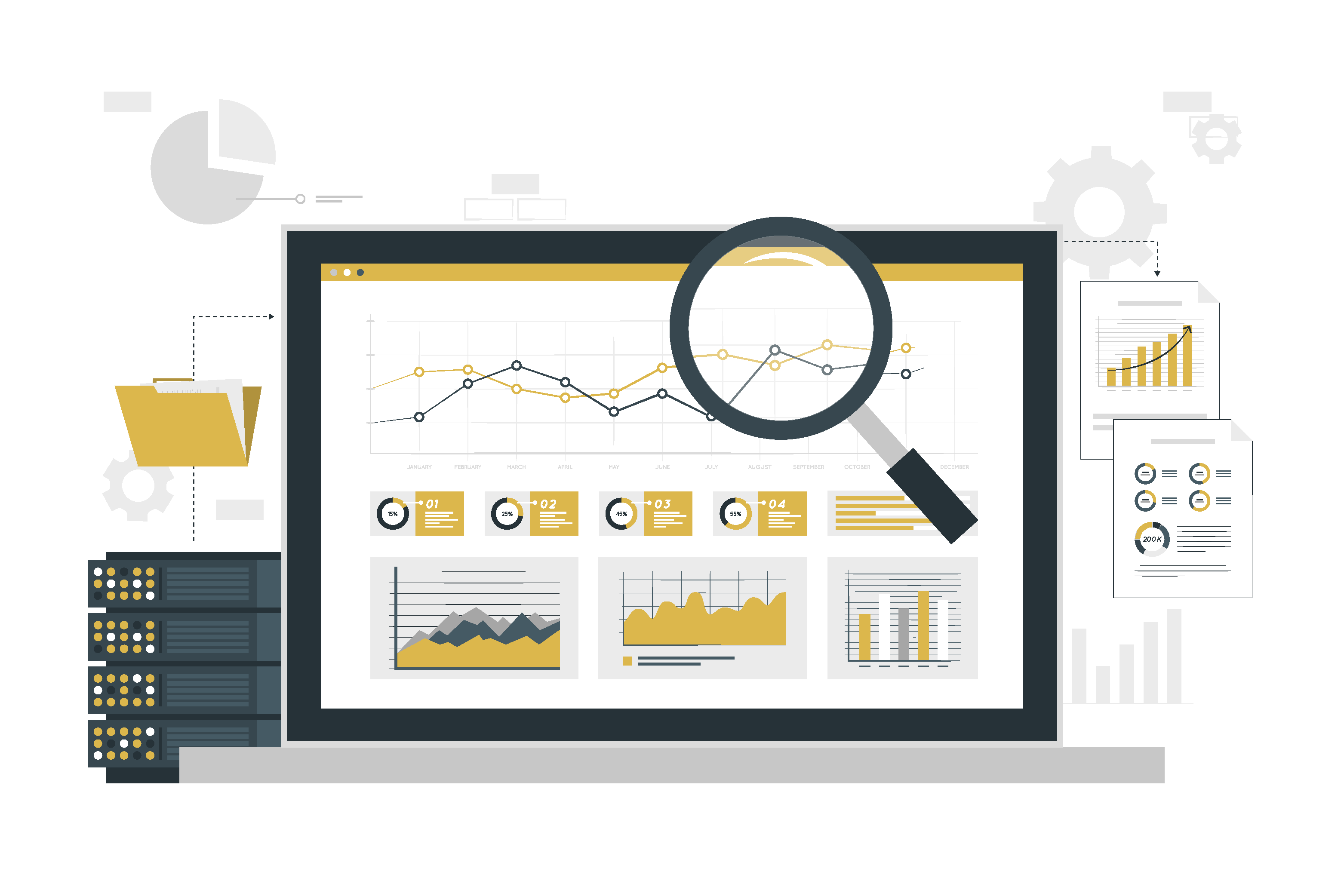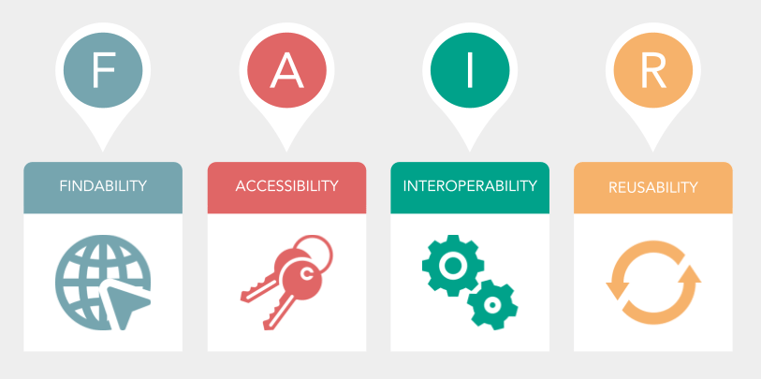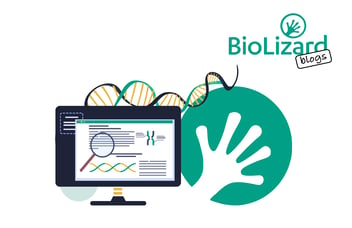An Interview with BioLizard & Bridge Informatics CEOs Liesbeth Ceelen & Dan Ryder
An overwhelming amount of data is a nice problem to have, but a hard one to manage well. Dan & Liesbeth talk about the opportunities, unique challenges, and areas for growth at the intersection of biology and data science.
Dan, Liesbeth, can you please introduce yourselves for those who don’t know you?
L: Liesbeth Ceelen. I am CEO & board member of BioLizard, an expert data science partner offering comprehensive data-driven solutions to biotech and pharma companies with a full understanding of the biology and clinical relevance.
D: My name is Dan Ryder. I’m the founder and CEO of Bridge Informatics, a professional services firm that helps life science companies bridge the gap between data and insight.
Can you tell us about your scientific background?
L: I am a vet by training and I have a PhD in veterinary science. I’ve worked both in academia and for large pharma companies, but I am most drawn to start-up and scale-up environments. I’m passionate about application-oriented research, and have always wanted to co-create tangible outcomes that help patients.
D: I have a PhD in Biochemistry and Molecular Biology and an MPH in Disease Control. Before forming Bridge Informatics, I completed a post-doc and worked in a variety of roles addressing challenges in early-phase drug discovery and development pipelines pharma and biotech companies.
Can you recall a specific moment that made you passionate about the intersection of data science and life sciences?
D: Yes, I was doing wet lab work at the bench and grew increasingly frustrated from the lack of tools to organise and analyse microarray data (aka gene expression data). It soon became an obsession to find open source digital tools that allowed me to streamline RNA workflows.
L: (laughs) I had a similar experience. During my PhD, I started to realise my passion for combining expertises from different scientific fields to achieve a common goal. I remember being curious about correlations between the human microbiome and different disease states, such as cancers, but back then we didn’t have the tools or the data yet to explain the patterns that I noticed. Now, it is exciting to see how the effective use of data and approaches like in silico modelling can drive forward biological fields, as has happened with microbiome research.

What are the biggest challenges in this field?
D: When it comes to R&D teams, different scientists have different scientific training and experience, so it can be difficult for them to work together when they don’t know exactly what their colleagues are doing and how they’re doing it. We see that most businesses work in silos.
For example, in a restaurant, the general manager’s skills are totally different from that of the pastry chef. They don’t take the time to learn one another’s expertise. This may seem natural, but in the life sciences, it can create a huge problem in that people within the same company speak completely different scientific languages. We often see this with biologists and data scientists.
L: On top of that, scientists in R&D teams don’t have the time to learn to code, which adds to the chasm between biologists and information technology teams.
How does your company solve those challenges?
D: To Liesbeth’s earlier point, knowing that biologists and bench scientists don’t have the time to learn to code, we have built a team of biologists, computational scientists, software engineers, and bioinformaticians with extensive experience in providing data science solutions to biological challenges.
L: Exactly – both BI and BioLizard augment existing teams to help them do things faster and more collaboratively, and we see that this can save companies years of effort in bringing drugs from bench to bedside.
Both BI and BioLizard augment existing teams to help them do things faster and more collaboratively, and we see that this can save companies years of effort in bringing drugs from bench to bedside.
What are typical outcomes of the projects your company takes on?
L: Oftentimes when companies come to us, what they most want is to achieve a more data-driven way of working. To accomplish this, we start by instituting a good data management system. This is important groundwork before we get to designing algorithms or software solutions.
D: We feel a project is ‘complete’ when our clients have the data and insights they need to answer their specific research questions with speed and certainty. We do that by helping them collect, store, analyse, visualise, and understand biological data.
Was there a specific moment when you were struck by how much value your company could bring to the life sciences?
D: We once had a client tell us that we delivered both what they thought they needed and what they didn’t realise they needed. That feedback has stayed with me and continues to motivate me.
L: One project in the veterinary space comes to mind, in which we were supporting a client with biomarker development. They told us that since we started supporting them, they get much more out of their data, and faster. Because we were able to look at things in a different and data-driven way, we could both confirm what they already expected, and often provide more and deeper biological insights than they had foreseen. This project has now developed into a long-term collaboration.
What kinds of skill sets and backgrounds do your employees have?
D: When recruiting, one of the first things I look for is someone who has a solid background in wet lab research. They need that history of working at the bench to understand the importance of designing an assay well from the start. Having that background allows my team to relate to, and genuinely empathise with, our clients.
L: On top of that, when I talk to someone new, the most important thing is that they have potential to grow. Eagerness is a large part of BioLizard’s culture. I look for proactive, open people with a willingness to grow and learn. It is important to me to invest in junior profiles with ambition and drive.
What do you want your company to achieve?
L: I want to help biologists see the value of their data from the start. There is so much data being generated, but we only tend to leverage the tip of the iceberg. And that is a pity! We need to realise the potential of all data, including negative data, from early on in projects, and by using a data-driven approach from the start we can achieve more targeted, focused and effective outcomes faster. I foresee that this will have a huge benefit for patients, by supporting scientists to develop better drugs, find more accurate biomarkers, and design better clinical trials or treatment plans based on real-world data.
As well as having impact in the world of biology, I also want to have an impact within BioLizard. For me, having impact also means educating, empowering, and stimulating the people on my team.
D: In terms of my own team, I want them to look back on Bridge Informatics and be proud of the problem solving that they performed to bring the best possible solutions to our clients. I’m also proud that by supporting flexible working, my team has been able to spend more time with their families and develop sustainable, healthy approaches to working in a complex and demanding field.
As a team, we’ve already helped thousands of companies accomplish the discovery efforts that they strive for, faster. We help them keep their data safe, discover new drugs and diagnostics, and get those discoveries to market more quickly. That is hugely rewarding for me.
What do you envision for the future of big data and bioinformatics in the life sciences industry?
D: I envision that more effective management and use of data will make precision medicine a reality for everyone. Right now, highly personalised approaches in medicine are predominantly used as a last resort or in very special cases, but by managing data effectively and building innovative data science solutions to support health care providers, I believe we will be able to provide personalised medicine in a more cost-effective way. On top of that, I’m excited to continue putting informatics truly at the fingertips of biologists. We help biologists implement the latest innovations in data science without them needing to learn a whole new skill set – it’s a fantastic collaboration and intersection between two expertises that I think will continue to push forward data-heavy projects like those in genomics.
L: We are at the tipping point at which people in the biopharma industry are starting to realise that we need to pay close attention to data from the onset of projects. By making sure that biological data is well managed and FAIR, and using all available data to its full potential, we have the opportunity to make better predictions early-on, and thereby better medicines from the start. The value is in the data.

Why should a life sciences company hire a consultancy, as opposed to working solely with in-house data scientists, to help realise that vision?
D: Speed, agility, and expertise. We start our projects with a strong focus on collaboration, and proceed with a project-management based delivery model. By taking this approach, and also taking the time to relate to our clients, we’re able to build trust-based, long-term collaborations that provide huge value to biotech companies.
L: Once companies understand how much time and effort can be saved by the smart application of data science tools to biological questions, they often first want to do it all themselves! But in our experience, it can be difficult for companies to have access to the entire necessary skill set and bandwidth to tackle these challenges in-house. For just one project, you might need an understanding of multi-omics, plus an ability for software engineering, combined with applied knowledge on data management. We find that it is important to truly be an expert in these fast-moving and complex fields, to make sure that analyses are performed in a reliable and accurate way. So, a core part of our approach is fostering deep expertise in our team of Lizards, and staying up to date on new technologies. This means that we have an agile team of experts who can adapt to fast-moving fields, which would be difficult and expensive for a biopharma company to accomplish completely in-house. As an added bonus, we can also validate existing findings as a third party, to make sure that analyses aren’t biased and are as strong as possible.
How can people get in touch with you if they’re interested in working with you?
D: Connect with me on LinkedIn or visit our website, www.bridgeinformatics.com
L: Same! Reach out on LinkedIn or through our website.



